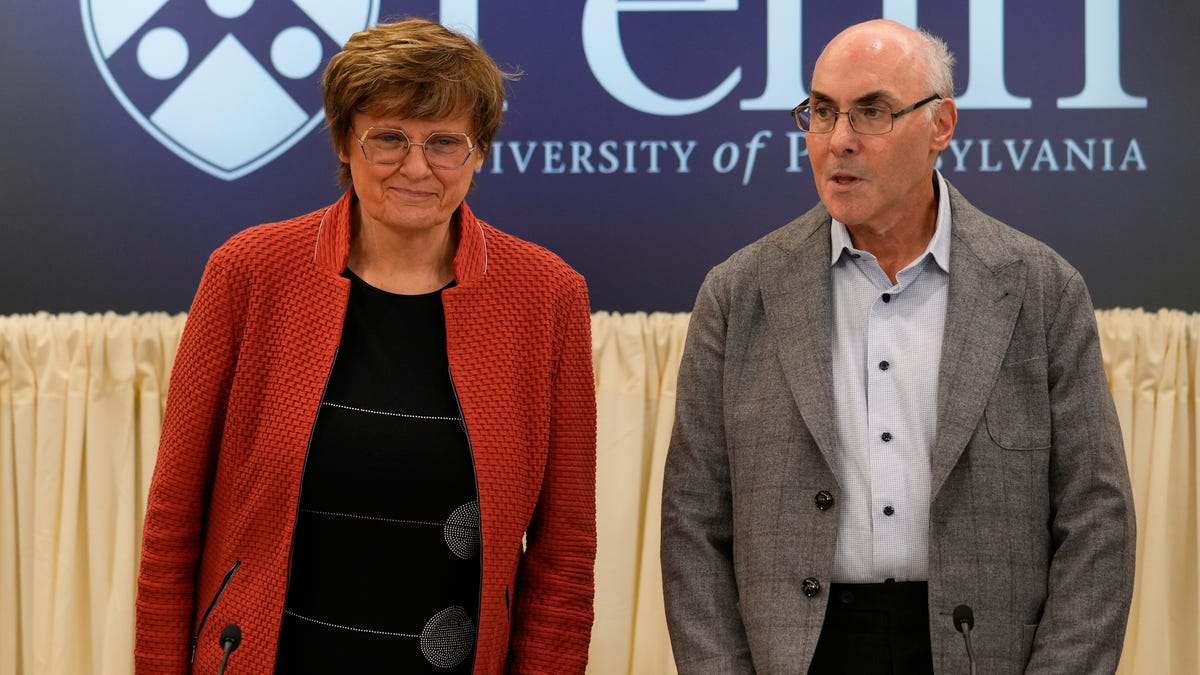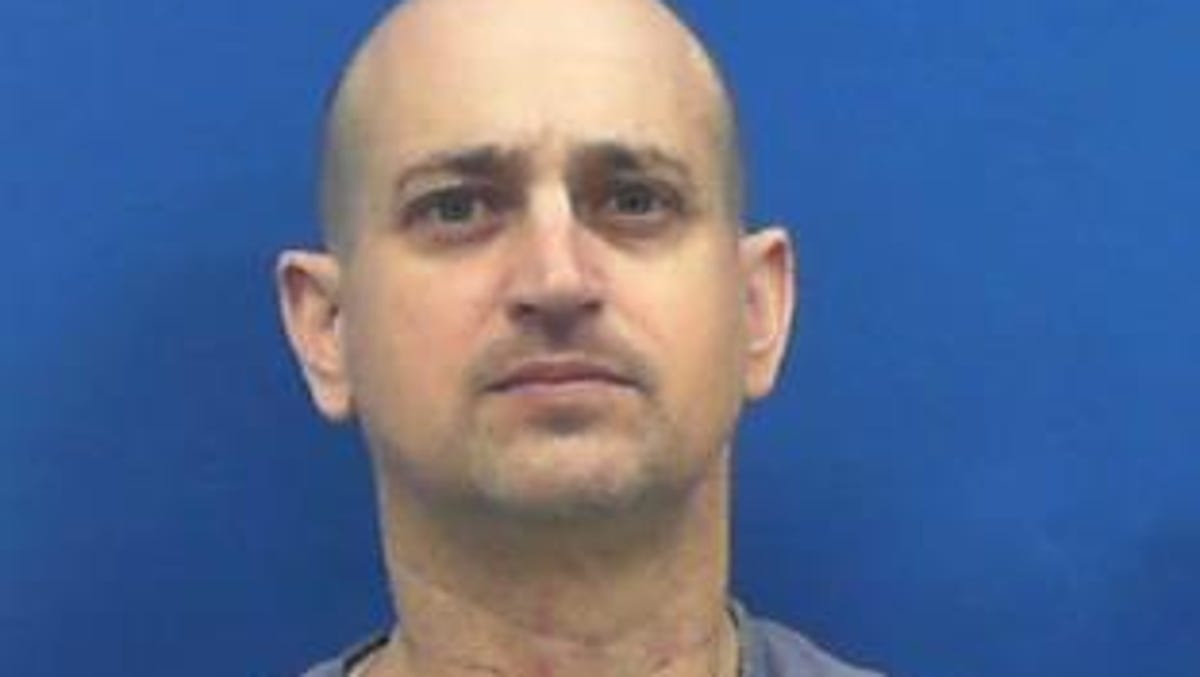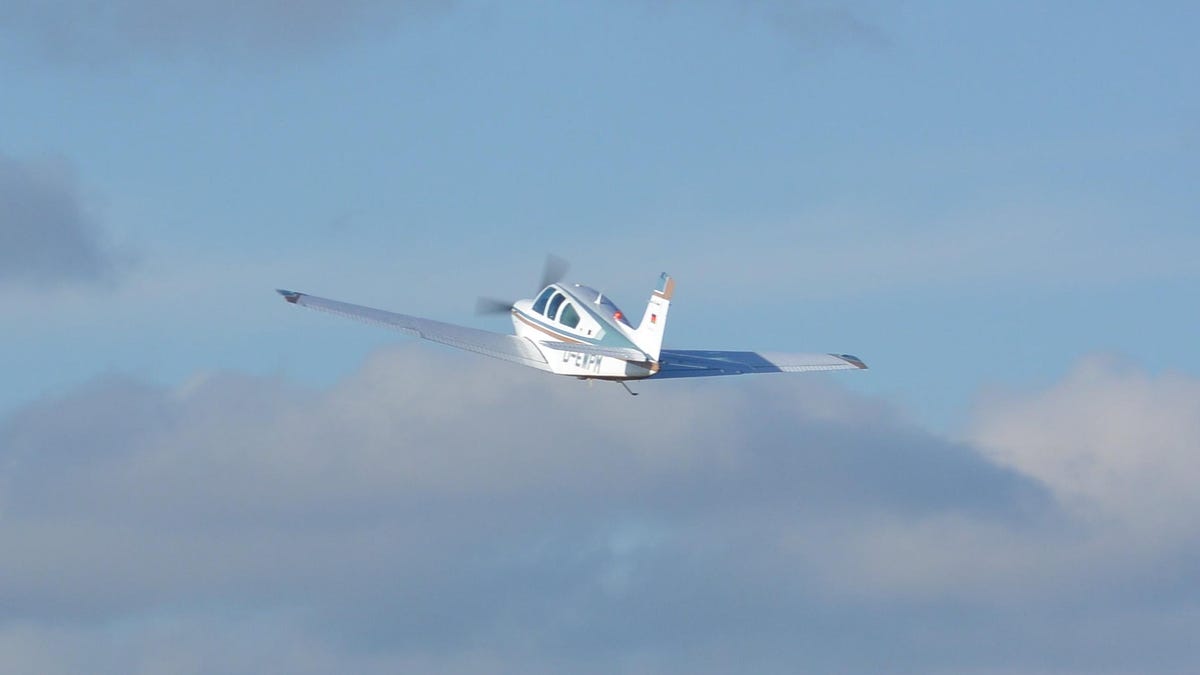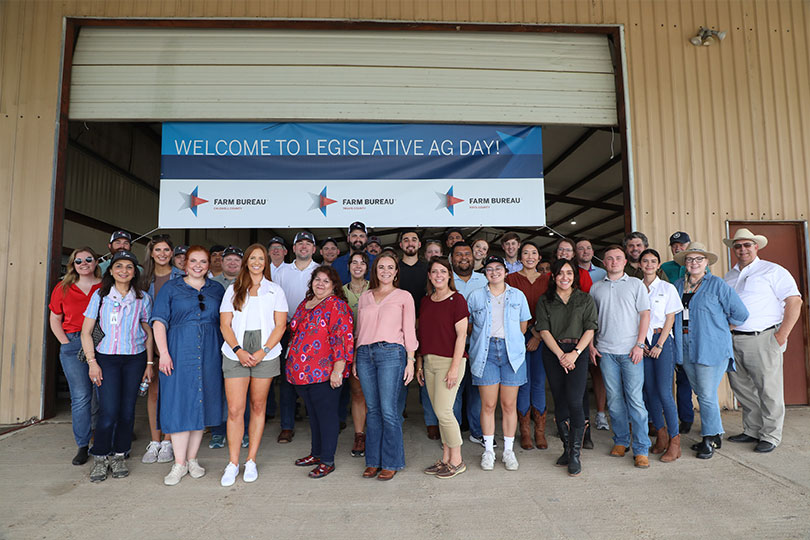Delaware
Delaware sits at the center of life science leadership. We should capitalize on that more

3-minute read
“You did it, and so young!” Proud mom reacts to son’s Nobel Prize win
Scientist and physician Drew Weissman, who won the 2023 Nobel Prize in Medicine, calls his parents to share the good news.
Earlier this fall, two area researchers were awarded the Nobel Prize for their pioneering discoveries in mRNA. The “groundbreaking findings” of these University of Pennsylvania scientists, Katalin Karikó and Drew Weissman, were instrumental in the development of mRNA vaccines against COVID-19.
It is remarkable to consider such world-altering efforts took place in our backyard — and perhaps even more striking that it took a Nobel Prize for most people to learn of it. Serious researchers are typically not inclined to toot their own horn and even if they are, their institutions are often challenged to effectively communicate the importance and relevance of their work.
Yet stories such as Professor Karikó and Weissman’s are all around us, certainly in abundance across our region and state.
I know this as the leader of the organization charged with growing and promoting the innovation and impact of Delaware’s life science sector, including both academic and private sector research and product and technology development. And I can also confidently say as a board member of the national group representing state bioscience associations that most of my peers from across the country are doing everything they can to replicate what we have.
We are incredibly fortunate to sit in an epicenter of the life sciences at a time when advances are accelerating through the application of new technologies like machine learning and AI, transforming human health and our economy in the process.
The newest edition of the Delaware Journal of Public Health offers a powerful testimonial to support that proposition. Here you will read of one new company’s exciting efforts to develop a vaccine platform to prevent infections caused by anti-microbial resistance; another firm is advancing a novel approach to treating severe atopic allergic diseases that are increasingly prevalent; and an industry leader writes of a strategy to advance biopharmaceutical manufacturing by fostering collaboration among biopharma, lab informatics, healthcare systems and academia.
More perspective: 2023 Nobel Prize winner was dismissed for decades. But her mRNA work led to COVID vaccine.
Beyond this cutting-edge research, we learn in this edition about strategic investments and programs to grow our STEM talent workforce in Delaware, including a targeted effort to engage underrepresented populations in the immense career opportunities in life science manufacturing and design and programmatic rollout of the creative CRISPR in a Box education kit that teaches high school students how to perform a gene transformation with CRISPR in a short three-hour experiment.
Each day, thousands of Delaware BioScience community members head to work inspired by a passion for science and a commitment to help people live happier, healthier and more productive lives. There is no industry that simultaneously does more to impact public health and our economic fortunes and possibilities. We are grateful to the Delaware Academy of Medicine and the Delaware Public Health Association for this opportunity to share a small example of the extraordinary work of our dedicated companies, researchers and partners that demonstrates the promise and critical value the life sciences bring to our state and indeed, world.
Michael Fleming is president of the Delaware BioScience Association.

Delaware
Where is the Delaware River deepest? New map poster shows 113-foot answer

What is the most common shark in florida
On vacation from France, Sandrine Fontaine and her husband, got the memory of a lifetime as they paddled near the coastline.
Sandrine Fontaine
Where is the deepest part of the 330-mile Delaware River? Where it is also widest, where the river meets the Delaware Bay? Try Narrowsburg, New York. A new map has been published showing the mysterious contours of what is called the “Big Eddy Narrows.”
The river, the longest free-flowing river east of the Mississippi, is 113 feet deep at River Mile 290, counting from Delaware Bay, and visible from the bridge connecting Pennsylvania and New York.
The Delaware River’s average depth is only four to five feet, although holes of 12 to 18 feet are not unusual.
A diver with a local search and rescue team said no light penetrates the bottom at all.
Made a map poster
The map is available as an 11-by-17-inch poster that its creator has donated to benefit the non-profit Upper Delaware Council (UDC), announced UDC Executive Director Laurie Ramie.
The map was developed by Lisa Glover of Honesdale, who became enthralled with this unique, local claim to fame of the Delaware River and contacted the UDC.
Although one might muse that the hamlet of Narrowsburg should have been named Deepestburg, its name is derived from its other distinction of being the main stem’s narrowest part. The river courses through a rock canyon before the bridge, where it is only 200 feet wide.
Where to see it
The Big Eddy Observation Deck on Main Street in Narrowsburg has an interpretative sign telling these distinctive topographic features. Here the public also finds a good place to watch for bald eagles as rowboats, canoes, kayaks, and rafts go by.
Perhaps very few people paddling by or on shore looking at this scenic part of the river are aware of the fantastic underwater depth.
This very deep part of the Delaware also is easily seen from the Darbytown Access on the Pennsylvania side.
The interpretative sign at the deck offers two theories of how the 113-foot hole was created. The first is that a long-drowned “plunge pool” was created from a glacial waterfall. The other theory is that a pothole was formed by tumbling rocks scoured out through erosion.
A whirlpool is often visible at the Big Eddy, where the deepest point is located just downstream from the narrows.
Log rafts spun like tops
The deeps at Narrowsburg have been known for a very long time, impacting 19th century log rafters. The Wayne County Herald’s Feb. 20, 1873, edition reported that J.I. Appleby and J.E. Miller, of Narrowsburg, out of curiosity took soundings of the river from a boat. They concluded the river was 101 feet. “Rafts in coming down the Delaware are frequently drawn into this eddy and sometimes detained for days,” the article reads. “Whenever the wind is blowing with any force, rafts are sure to be drawn into this eddy where they have to remain until the wind calms.”
The Herald republished an unattributed column from The Middletown Mercury on Jan. 20, 1881, stating that log rafts caught in the Big Eddy “may spin around like a top for an hour.” Rafts so caught could create a river traffic jam of a hundred rafts. “I have seen 500 rafts in here at one time, some of them on top of each other, and some turned up on edge, and others bottom side up,” the columnist penned.
Extensive research
The UDC press release states that Glover read articles from the UDC’s “The Upper Delaware” newsletter which led her to interviews with National Park Service divers who had measured the hole. Glover also found various illustrations.
She spoke of her desire for an accurately detailed map of the river bottom with the hope of potentially solving the mystery. Although topographic maps exist showing the elevation of landforms above “sea level,” bathymetric maps show depths of landforms below water.
Glover, in her research, discovered that the U.S. Geological Survey (USGS) had published a LiDAR scan of the Delaware River in 2020 and reached research scientist John Young, who provided a digital map focused on the Big Eddy section, the press release states.
Obtaining a map
From her research, Glover designed a topobathymetric color map with 10-foot contour lines and to-scale cross sections of The Narrows and The Deeps, printed 50 copies, and offered a stack to the UDC to share with the public as a fundraiser.
The Big Eddy Narrows poster is available for a $20 donation to the UDC.
Contact Administrative Support Stephanie Driscoll at stephanie@upperdelawarecouncil.org or 845-252-3022, or stop by the UDC’s office at 211 Bridge St. in Narrowsburg (next to the firehouse) on weekdays for pick-up.
Payment must be by check or cash. Add $3 for mail orders.
Glover is affiliated with Highlights for Children, the Stourbridge Project, the Wayne County Arts Alliance and the Center on Rural Innovation, for which she is their Placemaking Fellow.
She holds a bachelor’s degree in architecture and a master of engineering degree from Lehigh University and likes to use a paddle board. Her website is lisathemaker.com.
Peter Becker has worked at the Tri-County Independent or its predecessor publications since 1994. Reach him at pbecker@tricountyindependent.com or 570-253-3055 ext. 1588.
Delaware
ChristianaCare doctors in Delaware look to unionize, citing need for better benefits

NEWARK, Delaware (WPVI) — ChristianaCare physicians in Delaware have filed paperwork with the National Labor Relations Board to form a union.
Doctors say in recent years, issues such as burnout, being understaffed, recruitment, and retention have gone unaddressed by the administration.
Now, they felt they had no other choice.
“I think our hands were forced to do this. All of the physicians are reaching a breaking point,” said ChristianaCare Dr. Ragu Sanjeev, one of the leaders of the effort.
Doctors also say “compensation redesign” by the hospital would take away doctors’ paid time off, which they say is essential to preventing burnout.
Under this plan, vacation and other time off would not be compensated.
“That’s what really frustrated us and that’s what broke the camel’s back so to speak,” said Dr. Gennadiy Ryklin with a ChristianaCare.
However, doctors say their goal is better patient care and outcomes, which they believe are being negatively affected by current conditions.
“It always starts in the emergency room and right now, the one thing that we see is patients can’t even get an emergency room bed. We’re practicing hallway medicine,” said Dr. Ryklin.
Among roughly 400 eligible doctors in the system, leaders say there’s about 70% in support to unionize.
Doctors say they want patients’ needs prioritized, more input in decision-making, better benefits, and less corporate influence.
They say there’s been a shift to more doctors employed by hospitals as opposed to working in private practice or being self-employed.
“Corporatization of medicine has expanded its claws over us, how we practice medicine, how we take care of patients,” said Dr. Sanjeev.
“I personally have felt in my five years as an attending physician, and my colleagues that have been in it for decades, they’ve seen that their voice has been lost with the corporatization of medicine, of private equity firms coming in and buying hospitals,” echoed Dr. Ryklin.
In response to doctors’ concerns and efforts to unionize, ChristianaCare issued the following statement to Action News:
“At ChristianaCare, we are proud of our physicians, who deliver world-class care while serving our patients and our community with love and excellence. We believe that continuing to have a direct relationship with physicians is an essential component of our continued shared success. We have received the petition from Doctors Council SEIU Local 10 MD and recognize the right of all employees to vote on whether or not they want a union to represent them.”
Doctors say they want to work with their employers to improve their workplace and care for patients.
“In no way is this adversarial. We want to work together with our employer to enact positive change,” said Dr. Ryklin.
If efforts to unionize are successful, physicians at ChristianaCare Christiana Hospital in Newark, the Wilmington Hospital, and Middletown ER would all be covered.
Unions among physicians aren’t very common, but given conditions at hospitals across the country post-pandemic, it has happened in other places and could be a growing trend, according to Dr. Sanjeev.
“The trend has started primarily due to us being asked to do more and more with less and less of everything, including time and energy. The situation that exists currently does not let us practice medicine the way we want to, which is the right way,” Dr. Sanjeev said.
The National Labor Relations Board confirms it has received the doctors’ petition. Doctors at ChristianaCare hope to have a vote in six to eight weeks.
Copyright © 2024 WPVI-TV. All Rights Reserved.
Delaware
AT – Duncannon to Delaware Water Gap – The Trek

- AT Days 9-16 Duncannon, PA to Port Clinton, PA
Day 9-11 – Downtime (0 miles)
Day 12 – Duncannon to Peter’s Mountain Shelter (9.3 miles)
Day 13 – Peter’s Mountain Shelter to Rausch Gap Shelter (18.0 miles)
Day 14 – Rausch Gap Shelter to 501 Shelter (17.5 miles)
Day 15 – 501 Shelter to Eagle’s Nest Shelter (14.9 miles)
Day 16 – Eagle’s Nest Shelter to Port Clinton (9.0 miles)
Harper’s Ferry Start – Marker 1026.
Days 9-11 – Down days.
I had planned on one day off, but personal issues pushed it to 3. I could have started late on the last of these days, but as it was raining, 50sF, overnight in the low 40s, and the forecast for the next 5 days was rain off and on well…
Day 12
It stopped raining! Let’s go! The trail starts at the Susquehanna River and goes straight up to the top of the ridge (~1,200 ft in 2 miles). If you find Duncannon on a map with contours, you can see this is the same ridge that hits Duncannon on the west side except that the river cut through it. It also has the same rocks. I lost a sitting pad somewhere in those rocks.
I was so full of energy from the days off that I wanted to go further. Except thunderstorms were forecast for the evening and overnight.
The Shelter was full and on the bottom level, so I headed to the 2nd (Yes, this Shelter had 2 levels). I had my pick of spots and chose poorly. I was on the windward side. The rain didn’t come in on me, but the cold air blew in that window and straight down onto me. I barely kept warm enough.

Yes, that’s the trail!

Day 13
The next morning was cold and rainy. I trudged 18 miles all day in the rain. Got to the Shelter about 5:00 pm. There were already two guys there in their sleeping bags and ready to sleep. I, and two more guys cooked our meals and went to sleep as well about 7:30. The two guys that were already in the sack slept straight through until 5:30 in the morning. Then they made a lot of noise when they got up and took off by 6:00.
Day 14
The day was nicer and the 17.5 miles went faster. Except for the Damned rocks. I can make pretty good time until I hit the rocks. Then it’s down to 1/2 to 1 mph.


The Green Tunnel

Bridge near I-81
The shelter was a dream. I shared it with only two other people. It was completely enclosed with about 18 bunks. A nice table in the middle for cooking, a spigot for water, a garbage can, and a hose for a shower. The shower was COLD, but felt good anyway. I dries my stuff out. Hooray!

My stuff

Cooking Dinner
Day 15
Not so far today, and good weather, which was a godsend.
I made it to the shelter about 15 minutes before it started raining. One other young lady from last night’s shelter arrived about the same time that I did. It poured all night.
Day 16
It finally stopped raining about 9:00am. I pulled a calf muscle and jammed my toe slipping on the rocks. I hate the rocks to begin with. I’m lucky if I can do 1/2 to 1 mph. When they’re wet, they’re really treacherous and I have to go even slower. But obviously I didn’t go slow enough. So I opted to stay in Port Clinton after only 9 miles. There is a pavilion provided by a church. It’s loud, but I can rest my foot and leg.

This used to be the frontier
This website contains affiliate links, which means The Trek may receive a percentage of any product or service you purchase using the links in the articles or advertisements. The buyer pays the same price as they would otherwise, and your purchase helps to support The Trek’s ongoing goal to serve you quality backpacking advice and information. Thanks for your support!
To learn more, please visit the About This Site page.
-

 News1 week ago
News1 week agoMan, 75, confesses to killing wife in hospital because he couldn’t afford her care, court documents say
-

 World1 week ago
World1 week agoPentagon chief confirms US pause on weapons shipment to Israel
-

 Politics1 week ago
Politics1 week agoRFK Jr said a worm ate part of his brain and died in his head
-

 Politics1 week ago
Politics1 week ago'You need to stop': Gov. Noem lashes out during heated interview over book anecdote about killing dog
-

 Politics1 week ago
Politics1 week agoBiden takes role as bystander on border and campus protests, surrenders the bully pulpit
-

 World1 week ago
World1 week agoConvicted MEP's expense claims must be published: EU court
-

 Politics1 week ago
Politics1 week agoHere's what GOP rebels want from Johnson amid threats to oust him from speakership
-

 World1 week ago
World1 week agoPro-Palestine protests: How some universities reached deals with students



















